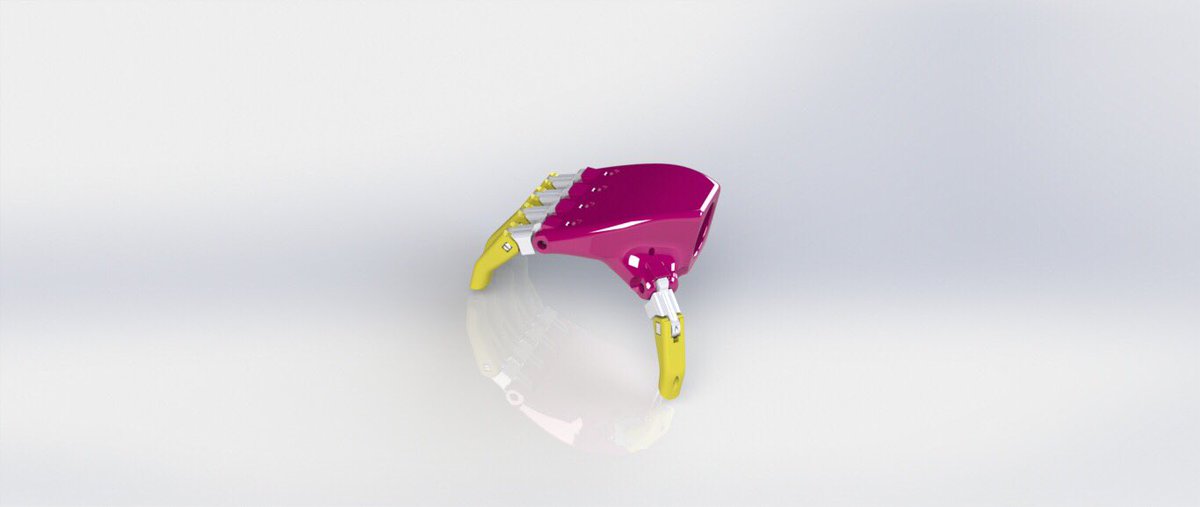We’ve spoken to 3D FOLKES, a Sheffield based professional 3D printing and CAD design start-up, about their first prosthetics project and to discuss the future impact of 3D printing within the HealthTech arena.
What is 3D printing?
3D Printing, is in essence a simple four step process: find an object or image that you would like to reproduce, recreate this image using 3D CAD software, save this 3D image onto an Sd card and set the 3D printer going. While using a type of polycarbonate sheet to construct the build. The printer then takes strands of coloured polymers and layers them from the ground up to create your 3D model.
Charlie’s case study
Six year old Charlie’s current prosthetic was anything but enabling, in fact, it was so heavy that Charlie had to use her other arm to lift up the cumbersome prosthetic, thus significantly decreasing the benefits that the prosthetic should bring.
After seeing a Team UnLimbited project featured on Channel 4’s Shed Of The Year programme, Charlie’s family undertook further research and approached the bespoke prosthetics, 3D printing company. However, they were so inundated with clients, an estimated waiting time of 12 to 18 months was predicted.
An NHS alternative takes 6 to 8 weeks to produce, by which time any measurements may be outdated and significant time and mobility over that time period lost.
Alex, a friend of Charlie’s family had overheard about the lengthy waiting times and decided to do his own research to find an alternative. Following online searches, Ben and his Sheffield based team were then approached by Alex, to see if there was a quicker and more collaborative solution to provide Charlie with her new prosthetic arm.
The design for the lightweight and functional RIT arm used by 3D Folkes to model the new prosthetic arm has come directly from Ivan Owen, “the co-designer of world’s first 3D printed mechanical hand.” Ivan didn’t patent his design and instead, “released it to the world with an open source license.” via http://enablingthefuture.org
This was 3D Folkes’ first prosthetics design project, which has taken around a month to reach completion and Ben is optimistic that the completion time will soon be around 2 weeks.

Charlie was able to choose the colours for her light weight prosthetic and as a result was very happy to wear it, something which she had been reluctant to do with her previous NHS one. Charlie will continue to wear the prosthetic over the next few weeks and feedback any minor tweaks for Ben’s ever growing team to adjust.
In addition, the speed of 3D printing means that Charlie will be able to have the length and colour changed as her, and her preferences change over time. A concept that would have until recently been seen as an otherwise long and arduous process.
Kate, Charlie’s mum was very happy with the outcome, and already has tasks in mind for Charlie to get involved with using her new prosthetic over half term!
Kate added that, “ Ben and his team have been brilliant throughout the whole process. I am very grateful that they were so enthusiastic to get involved in a project that could have a real positive impact on Charlie.”

The future of 3D printing
3D printing is set to disrupt the future of manufacturing, according to The Economist traditional manufacturing will soon become a distant thought. High profile manufacturers like Adidas are already intending to 3D print trainer soles in highly automated Western factories as opposed to, “low-cost Asian countries to which most trainer production has been outsourced in recent years.”
In addition, they note that “GE, one of the world’s biggest manufacturers” has already invested “$1.5bn in 3D printing” and “Caterpillar and John Deere…are working with Carbon on moving their warehouses, in effect, to the online cloud” so parts in the near future will be downloaded to different locations when required.
Ben sees a bright future for 3D printing for UK manufacturing as a whole, instead of growth within the domestic 3D printing market which some are predicting. Ben agrees that in the near future large scale 3D printing will replace traditional injection moulding techniques, which have long helped China leap ahead in plastics manufacturing.
In addition, Ben points out that “the decentralised manufacturing industry” means that, “costs to entry are decreasing” and 3D printing will soon be ready to enter the mainstream. Infact, companies often use 3D Folkes to “prototype designs costing £300 that would have perhaps otherwise cost £30 000,” to test parts before the monetary commitment is made to manufacture in bulk, thus bringing potentially huge savings to clients in the long term.
Ben knows first hand that 3D printing capabilities are evolving on a monthly basis and hopes that soon him and his team will be able to create a similar Open Source prosthetics software, so that more people, like Charlie, will be able to benefit from these technological advances in the near future.
Further information:
3D Folkes: https://3dfolkes.co.uk
e-NABLE: http://enablingthefuture.org
Team UnLimbited http://www.teamunlimbited.org/e-nableblog/2015/8/9/team-unlimbited-is-created
About 3D FOLKES
3D Folkes is a professional 3D printing and CAD design service, which focuses on delivering high quality work with excellent service. Based in Sheffield, UK, we are perfect for product development, prototyping or any other creative needs.
Contacts: [email protected], mwphotography2016@gm
Josie Ball



